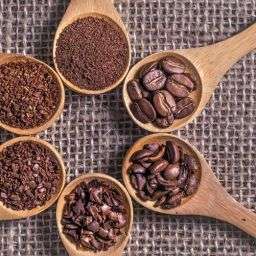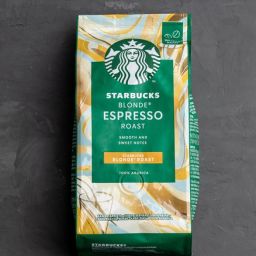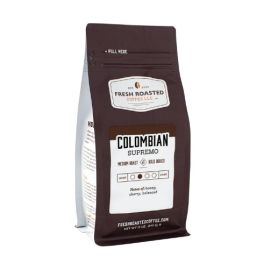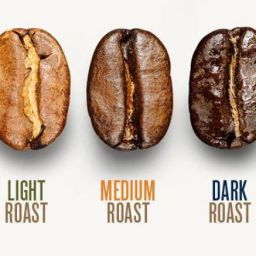
Pour over coffee making is an elegant and simple way to brew your morning cup. It involves manually pouring hot water over coffee grounds in a filter. The water then flows through the coffee, absorbing its flavors and aromas, before dripping into a carafe or mug below. This method gives you control over the brewing time and temperature, allowing for a more nuanced and personalized cup of coffee.
Compared to electric drip coffee makers, the pour over method shines in its simplicity and the quality of coffee it produces. Electric machines might offer convenience, but they often fall short in flavor extraction, making pour over a preferred choice for coffee enthusiasts. The hands-on approach to pour over brewing allows for fine-tuning of variables like water temperature and pour rate, leading to a superior coffee experience.
Brands like Hario and Melitta stand out, offering durable, lightweight, and affordable options. These plastic coffee makers come in various designs, accommodating different preferences and brewing styles.
Key Takeaways
- Affordability: Plastic pour over coffee makers are generally more budget-friendly than their ceramic or metal counterparts, making quality coffee accessible to a wider audience.
- Durability: Unlike ceramic models, plastic coffee makers are robust and less prone to breaking, ideal for everyday use and travel.
- Ease of Use: Their lightweight nature and straightforward design make plastic pour over brewers easy to handle, clean, and store.
The choice between plastic and ceramic pour over coffee makers often boils down to personal preference, with each material offering distinct advantages. While some argue that ceramic models retain heat better, enhancing the brewing process, others prefer the practicality and resilience of plastic. Moreover, the debate around taste and health concerns, particularly regarding BPA in plastics, is ongoing. Nonetheless, many plastic brewers are now BPA-free, addressing health concerns and ensuring a safe, enjoyable coffee brewing experience.
Design and Functionality
When it comes to pour over coffee makers, design and functionality go hand in hand. Let’s dive into the features that elevate your coffee game, focusing on the strengths of plastic models and comparing a few top contenders.
Shape Matters
The shape of a pour over coffee maker significantly influences the brewing process. Conical designs are popular, as they concentrate coffee grounds and water flow, allowing for a uniform extraction. Plastic models, like the iconic Hario V60, epitomize this design, featuring a precise angle that optimizes flavor.
Filter Type Flexibility
Filters play a crucial role in determining the taste and texture of your coffee. Plastic pour over devices often accommodate a variety of filters, from paper to metal. Paper filters produce a clean cup with minimal oils, while metal ones allow more oils and fine particles through, leading to a richer body. The flexibility to use either type of filter adds a layer of customization to your brewing experience.
Material Advantages
Plastic pour overs offer several material benefits. They’re lightweight, making them perfect for travel or outdoor adventures. Additionally, they’re less likely to break compared to glass or ceramic, providing durability and peace of mind. Many coffee enthusiasts also appreciate that plastic models can retain heat well, ensuring a consistent brewing temperature.
Top Models and Brands
- Hario V60: This model is a favorite among coffee aficionados for its effective design and affordable price point. Its spiral ribs allow air to escape, facilitating a stable brew.
- Melitta Ready Set Joe: Known for its simplicity and effectiveness, this model is great for beginners and those who prioritize convenience.
Each brand brings something unique to the table, whether it’s Hario’s precision engineering or Melitta’s focus on accessibility. The choice often comes down to personal preference, considering factors like design nuances, filter compatibility, and the specific features that matter most to you in your daily coffee ritual.
Pros and Cons of Plastic Pour Over Coffee Makers
When weighing the options for pour over coffee makers, the material is a key consideration. Plastic, with its unique properties, offers several advantages and some drawbacks. Here’s a closer look at how plastic stacks up against other materials in terms of heat retention, taste, health considerations, and overall versatility.
Pros
- Durability and Safety: One of the most significant benefits of plastic pour over coffee makers is their durability. Unlike ceramic or glass, which can easily crack or shatter upon impact, plastic models can withstand bumps and drops, making them ideal for daily use and travel.
- Heat Retention: Plastic is a good insulator, which means it can maintain the water temperature during the pour over process better than some other materials. Consistent temperature is crucial for extracting the full flavor from coffee grounds, and plastic’s natural insulation properties help achieve this.
- Versatility and Adaptability: Plastic pour over coffee makers are incredibly versatile. Many are designed to fit over a variety of mug sizes and are compatible with different types of filters, from paper to cloth to metal. This adaptability allows coffee enthusiasts to experiment with their brew until they find their perfect cup.
Cons
- Taste Impact: A common concern with plastic is its potential to impact the taste of the coffee. While high-quality, food-grade plastic is designed to be neutral, some coffee drinkers report a slight difference in taste, especially when comparing with pour overs made from materials like glass or ceramic.
- Health Considerations: The health aspect of using plastic for anything related to food and drink is a hot topic. The primary concern is BPA (bisphenol A), a chemical found in some plastics that can leach into food and beverages. However, most plastic pour over coffee makers now are made from BPA-free materials, mitigating these concerns. Still, it’s important for consumers to verify the type of plastic used in their coffee makers.
- Environmental Impact: Plastic’s environmental footprint is another consideration. While they are durable and long-lasting, these coffee makers contribute to plastic waste if not properly recycled at the end of their life cycle. For eco-conscious consumers, this can be a significant drawback.
User Experience and Ease of Use
Navigating the world of pour over coffee makers, especially the plastic varieties, is an adventure in both simplicity and complexity. The learning curve varies significantly across different designs. For example, a Hario V60 demands a precise pour rate and temperature control for optimal extraction, making it slightly more challenging for beginners. In contrast, simpler models like the Melitta Ready Set Joe are more forgiving, making them an excellent entry point for those new to pour over coffee.
To optimize the brewing process with plastic pour over coffee makers, start with the basics: use freshly ground coffee and maintain a consistent water temperature. Experimenting with the grind size and water flow rate can help you dial in the perfect cup. Remember, the beauty of pour over brewing lies in its ability to highlight the unique characteristics of your coffee beans.
Price Comparison and Value for Money
When it comes to cost, plastic pour over coffee makers generally present a more budget-friendly option compared to their ceramic or metal counterparts. For instance, a standard plastic Hario V60 can be significantly less expensive than its ceramic version, without compromising much on the quality of brew it can produce. This price difference makes plastic models particularly appealing to those just beginning their pour over journey or seeking a cost-effective brewing solution.
The value of plastic pour over coffee makers extends beyond just price. Their durability means they’re likely to last longer without the risk of breakage, offering good long-term value. Additionally, the design innovations seen in plastic models, such as enhanced ribbing for better water flow, contribute to a high-quality brewing experience.
FAQs
Are plastic pour over coffee makers safe?
Health concerns, especially about BPA and other chemicals, are common. Most plastic coffee makers today are made with BPA-free materials, making them safe for daily use. However, it’s always a good idea to check the product specifications for any health certifications.
How do I maintain and clean my plastic pour over coffee maker?
Cleaning is straightforward: rinse with warm water after each use to remove coffee oils and grounds. For a deeper clean, a mix of water and vinegar will help remove any buildup. Avoid abrasive sponges that can scratch the surface.
Can I use any coffee type or grind size?
Plastic pour over coffee makers are versatile, but achieving the best results depends on matching the grind size to your brewing method. A medium-fine grind is typically recommended, though experimenting with different sizes can help you find your preferred taste profile.
Final Thoughts
From durability and ease of use to the nuanced control over the brewing process, these devices present a compelling choice for both novices and seasoned coffee aficionados. While considerations around taste and health have been addressed, the advancements in plastic materials and design innovation ensure a quality coffee experience.









